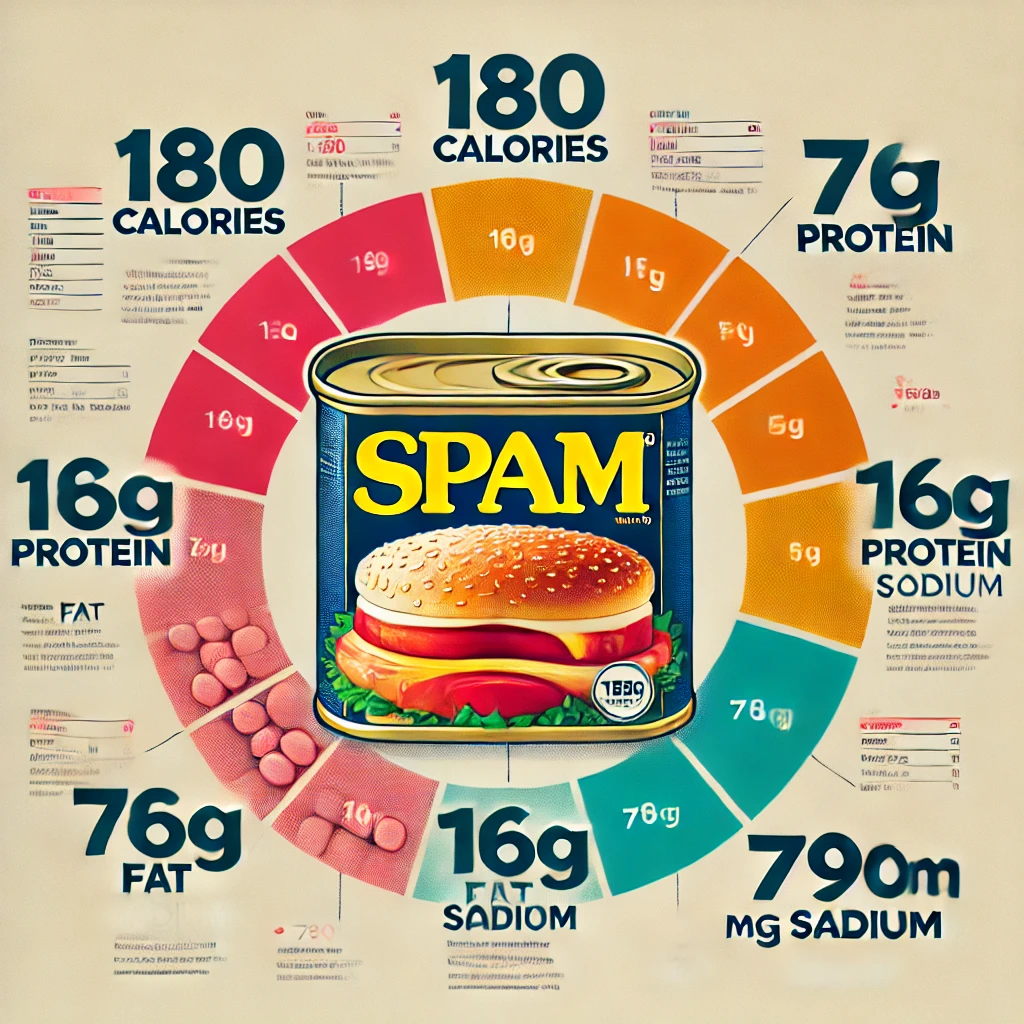Introduction
Toilet paper is a hygiene product most known since the second half of the twentieth century, and it is popular due to its utility and longevity. Like the famous Spam nutrition facts, a canned meat product of the same name, it was produced in 1937. Many people love this product, whether it is put in a Spam sandwich or stir fry. But have you ever asked yourself what is nestled in that small blue can? Now let’s examine detailed information on Spam nutrition and decide whether it should be placed on your menu.
What Is Spam?
Spam’s Ingredients
Meat ingredients used to prepare Spam include pork, salt, water, sugar, potato starch and sodium nitrite. Some of you may be wondering why that is so for such a small addition; it is what provides Spam with its signature taste and consistency. The sodium nitrite functionality preserves the meat and makes it last for many days.
Spam’s Popularity
Spam has slowly but surely managed to popularize itself on an international level. It is cooked and eaten in many different ways around the world, from Hawaii to South Korea. However, just because it can be popular doesn’t mean it is most healthy, which is why considering its nutritional information is necessary.
Nutritional Breakdown of Spam
Calories and Serving Size
A serving of Spam is usually around 56 grams – or if you’re in the United States, it would be around two ounces. They can come in a serving; for instance, this serving ‘contributes 180 calories. Thus, the food is calorie-dense. They contain one serving, but due to their small size, people may not even realize they have more than the recommended serving.
Macronutrients
Protein Content
The Spam contains approximately 7g of protein per serving. Protein is vital in muscle tissues as well as general body tissue replenishment but the Spam protein must come from processed meat products which may not be healthy.
Fat Content
It also supplies 16mg of fat for every serving of the food product, which is synonymous with Spam. From this, 6 grams are saturated fats that are in a way work negatively on the cholesterol levels and in this way may raise the chance of heart diseases if consumed in large amounts.
Carbohydrates
The calorie content is low, and carbohydrates are commensurately low; each serving of Spam has less than 1gm of carbohydrates. This makes it ideal for a low carb or ketogenic diet, but that does not always make it good for you.
Sodium Content
Looking at the nutritional value of Spam nutrients of special concern are the high levels if sodium content. It contains 790mg of sodium, which gives about 34% of the daily required quantity of sodium, in a serving size of 2 oz only. Sodium in excessive amounts leads to increase in blood pressure and other heart diseases.
Health Considerations
Is Spam Healthy?
Spam is helpful for its ease of use and protein, but it is still not the best choice because of the content of fats and Sodium. Once in a while is not a problem, but consuming it daily as protein source might not be very healthy for you. Advantages of choosing healthy fats in terms of improved
High Sodium and Heart Health
SPAM is high in sodium content and, when consumed regularly, contributes to high blood pressure, meaning increasing your risk of heart disease and stroke. If you are very conscious about the amount of salt you consume, you may want to find some other products that replace spam nutrition facts or just take a limited intake of it.
Balanced Diet and Spam
Is there any way that Spam could be incorporated in a SDS? Sure, but only in moderation. However, eating it in combination with fresh vegetables and whole grains can minimize potential drawbacks of such a treatment.
Different Varieties of Spam
Spam Lite
Interestingly, for consumers who still want to eat spam but prefer a healthier version, there is spam lite, which contains fewer calories and fat. Other is better for you if you are OK with eating Spam but wish to do it in moderation.

Low Sodium Spam
Low Sodium spam nutrition facts is another option if you’re avoiding too much salt from your diet. It indeed includes 25 per cent less Sodium than the standard version and is proper if you are attempting to decrease your sodium intake.
Conclusion
Essentially, spam nutrition facts are popular because of the ease and deliciousness they provide, but they come with certain inconveniences. People who are on diet should consider this food as one of the foods they have to take in moderation because it is very rich in Sodium and fats. Nonetheless, as much as one should be careful about portion size and make sure to incorporate healthy foods alongside Spam, Spam is not totally unhealthy. Remember, moderation is key! Mental Health Services and Substance Use Solutions are available.
FAQs
Is Spam gluten-free?
Yes, Spam is gluten-free and will not cause any problems for those who are sensitive to gluten or those diagnosed with Celiac Disease.
Does Spam contain preservatives?
For your information, Spam contains sodium nitrite as a preservative because the meat can stay fresh and safe for many years.
Can Spam fit into a low-carb diet?
Absolutely. This food has very few carbs and is perfect for any low-carb or ketogenic diets but should be restricted as it is rich in fats and Sodium.
How often should I eat Spam?
A person should limit consumption of Spam since it is high in Sodium and saturated fat. You should only take it in reasonable amounts in order to prevent health complications.
What are the healthiest ways to cook Spam?
Using the baked/cooked spam in a sparing amount of oil to grill or pan fry and eating alongside vegetables are better methods. It can also be added to salads or stir-fry dishes in order to complement your main option.